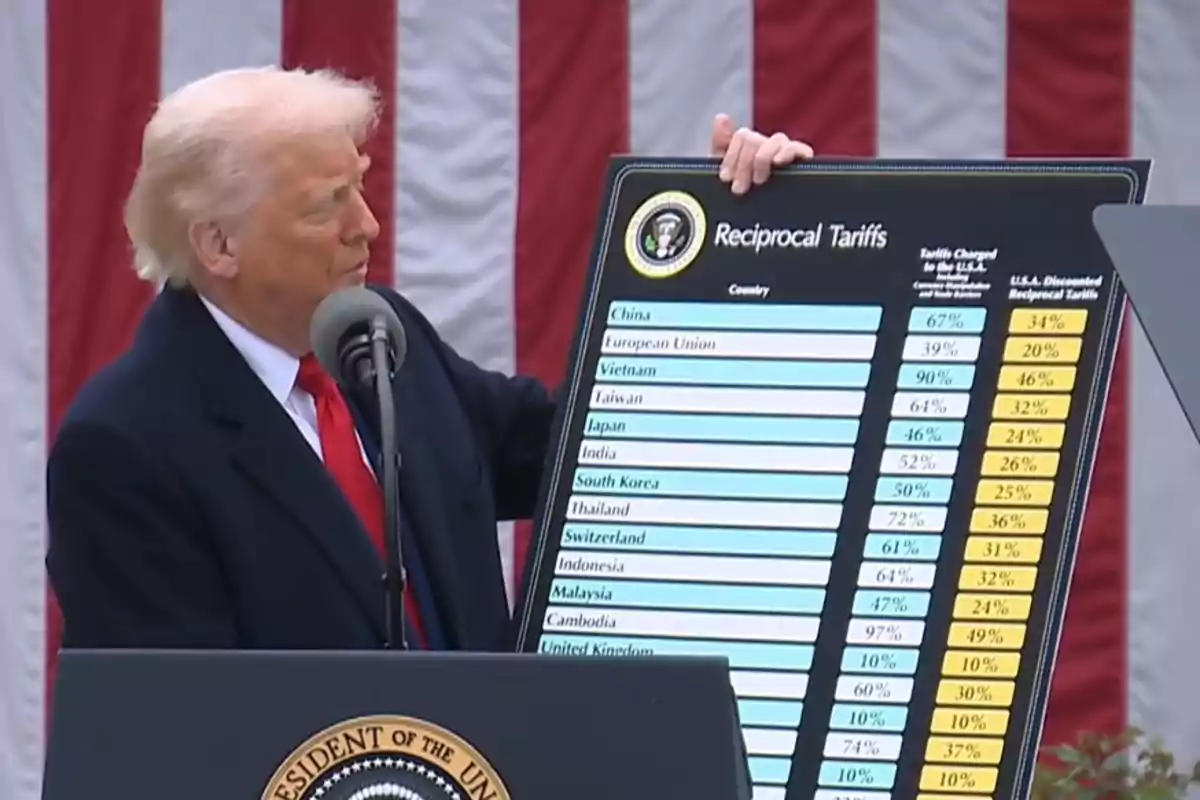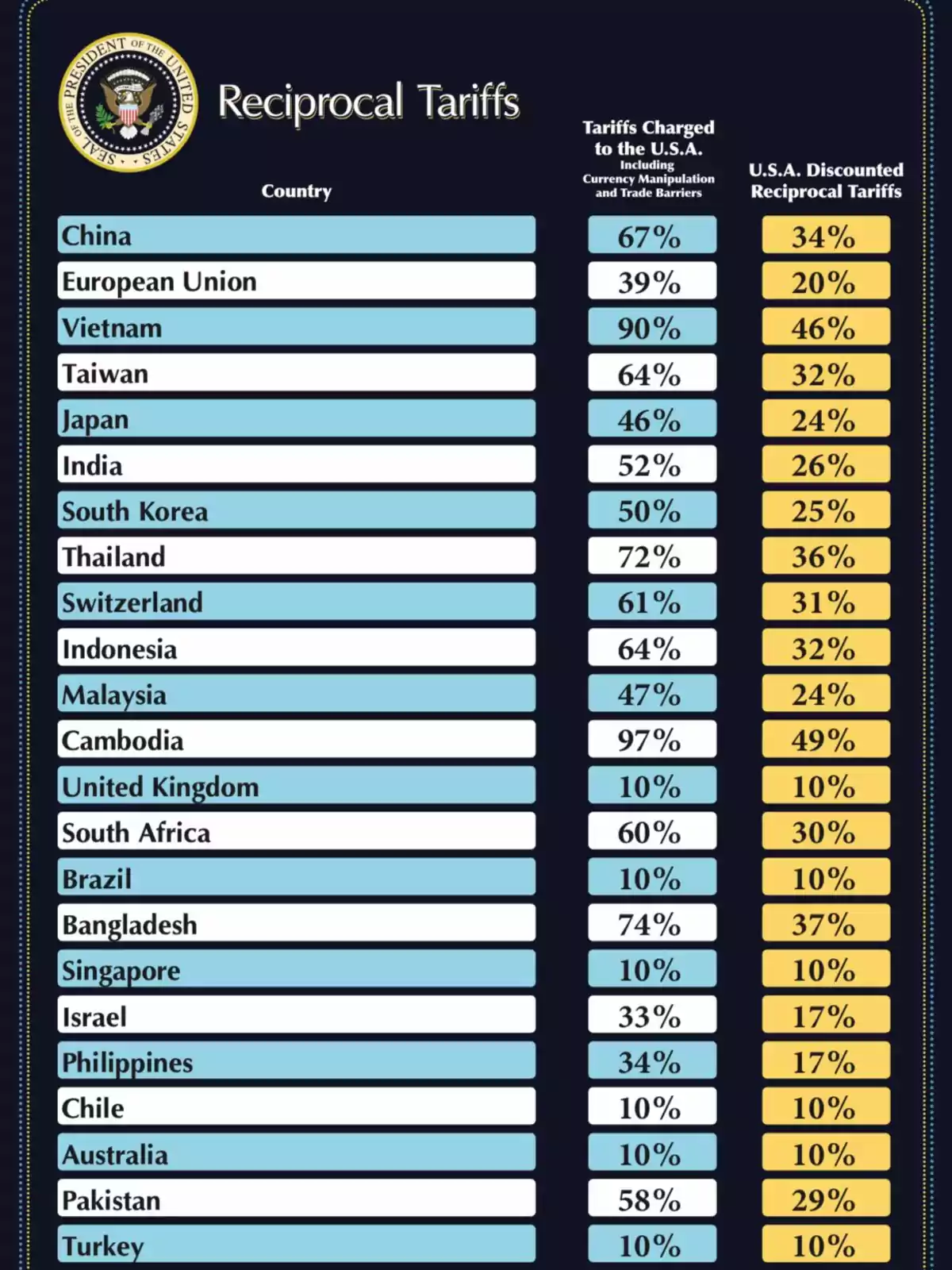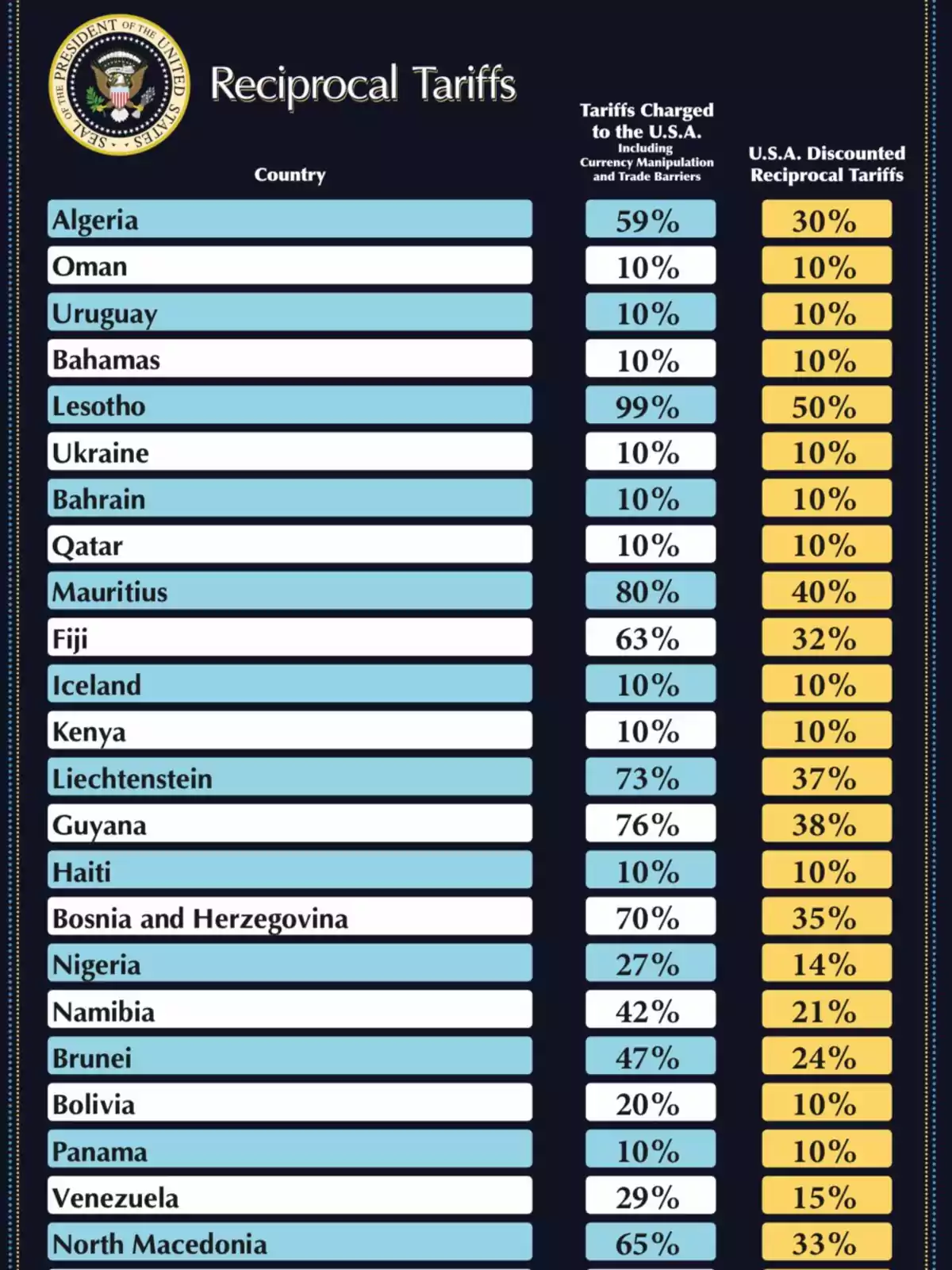
The 'Liberation Day': Donald Trump imposed reciprocal tariffs
'If they impose tariffs on us, we impose them too. How could anyone be upset?' declared the U.S. president
The President of the United States, Donald Trump, officially imposed the reciprocal tariffs, marking what he calls the "Day of Liberation" for the country. These measures are already in effect, after Trump signed an executive order that formalizes them.
Despite the implementation of these tariffs, Trump stated that he remains open to possible negotiations in the future. These measures will impact several countries with which the United States maintains trade relations.
In previous statements, Trump emphasized that the initiative aims to strengthen the American manufacturing sector and counteract the unfair trade practices of other nations.

With this new tariff policy, Trump seeks to strengthen the American economy and sanction those nations that have maintained harmful trade policies for the United States for years. According to projections, the reciprocal tariffs would generate approximately 600 billion dollars in revenue for the Government.
"None of our companies are allowed to enter other countries. And I say that, in trade terms, it's about friends and enemies, and in many cases, the friend is worse than the enemy," Trump declared during his speech in the Rose Garden of the White House.
"But these horrendous imbalances have devastated our industry and put our national security at risk," he added. He also commented: "If they put tariffs on us, we put them too. How could anyone be upset?"
Previously, the White House had criticized India for applying a 100% tariff on American agricultural products and had also pointed out similar trade barriers in the European Union, Japan, and Canada.
In his announcement, Trump used a chart to illustrate the tariff increases by country. For example, in the case of China, tariffs would increase by 34% to match the same level they charge the US.

How reciprocal tariffs work
In practice, this policy means that, for example, if a country charges a 10% tariff on American products, the United States would impose a 10% on imports from that country.
Trump emphasized that reciprocal tariffs are not intended to punish beyond what is necessary but to establish a "fair deal" in international trade. He has also suggested that he could reduce or eliminate these tariffs if the affected countries lower or eliminate their own tariffs against the United States. Trump highlighted that this policy will also generate millions in revenue for the Government.
More posts: